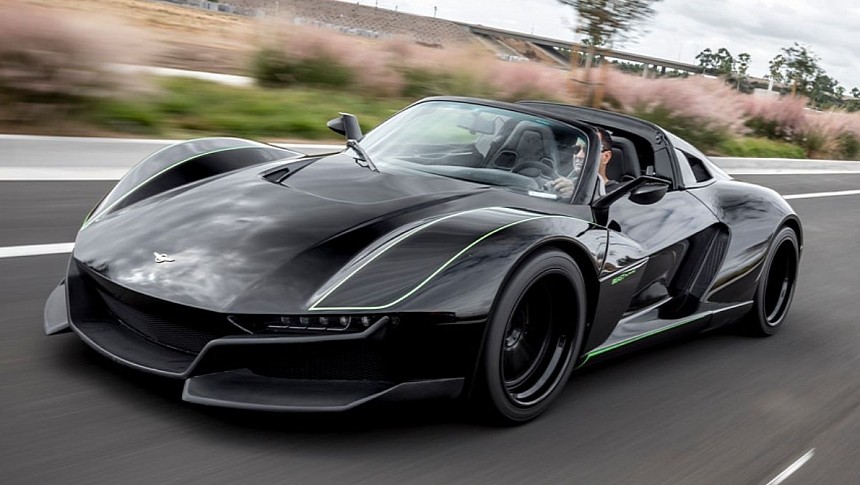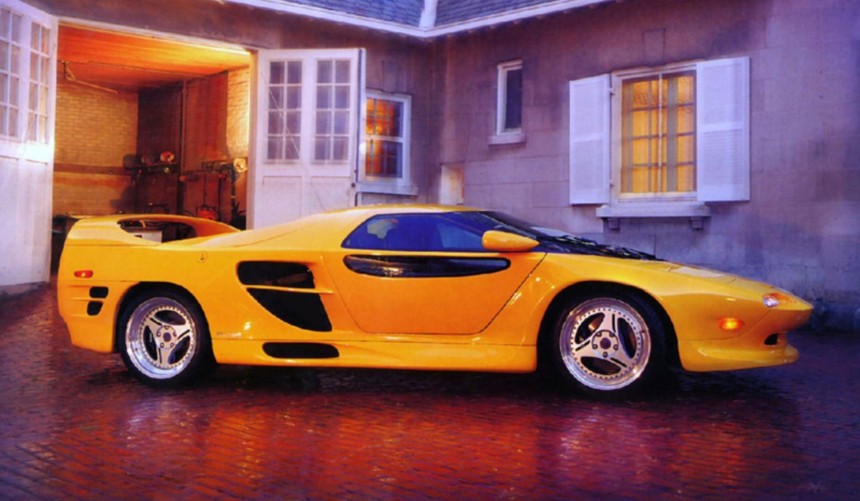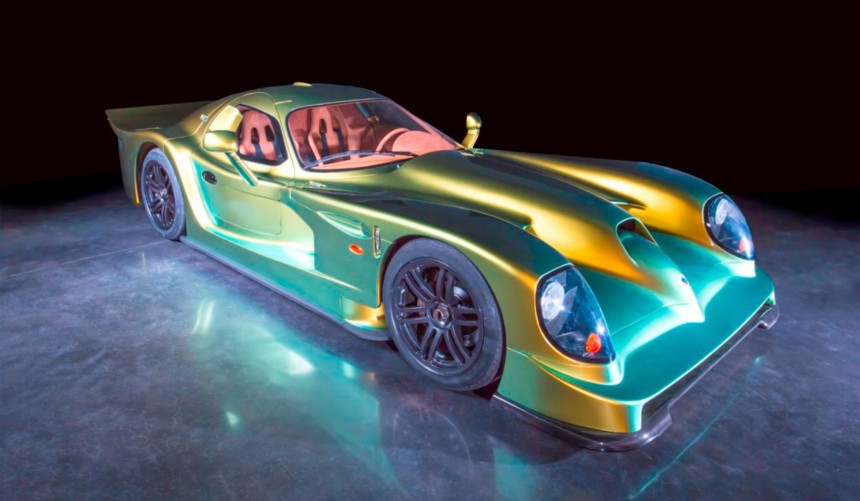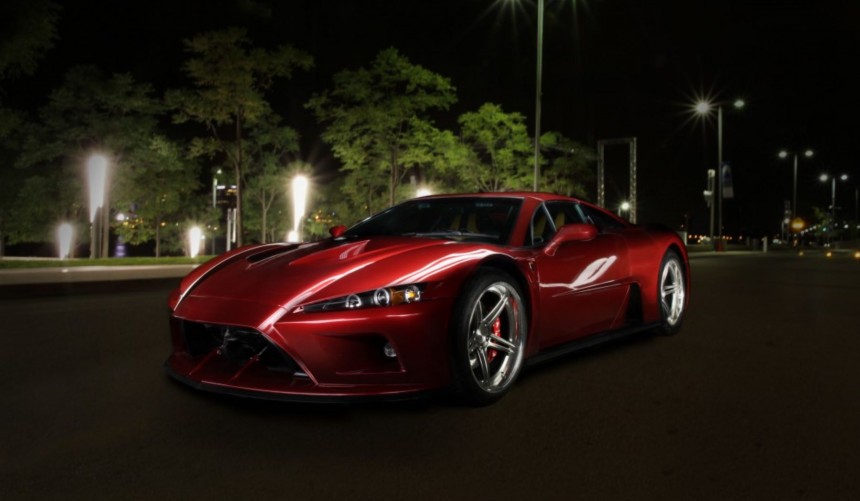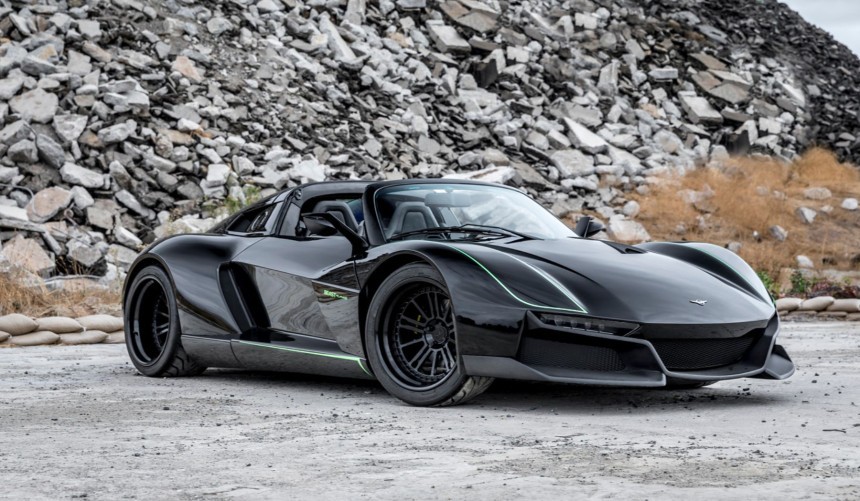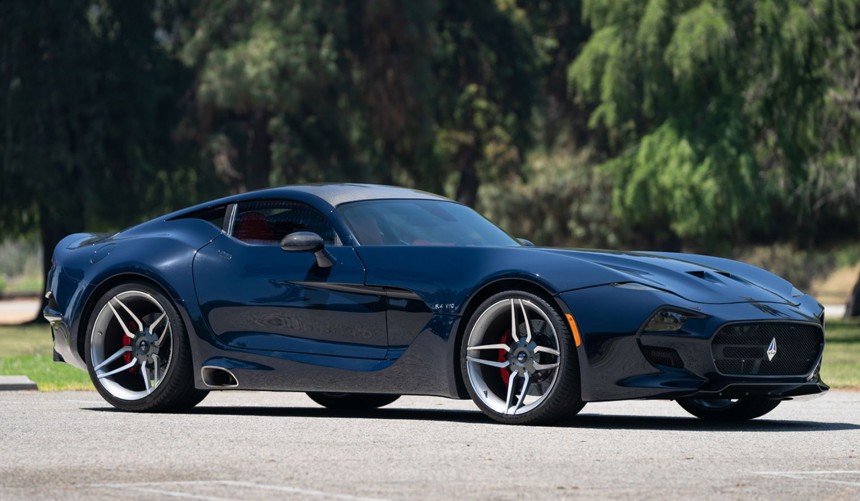Fast, powerful, and downright outrageous, these American supercars never won any popularity contest, but that doesn't mean they weren't special.
For older American gearheads, a supercar is a 1960-1970 US-built intermediate with a potent big-block V8 and a habit of shredding rear tires.
Yes, I'm talking about muscle cars, but those legendary machines were known as supercars back in the day.
However, the decline of those terrific machines and the emergence of exotic high-performance sports cars gave the term a different meaning.
Popular American supercars (the modern meaning of the term) include legends like the Dodge Viper, Ford GT, the C6 Corvette ZR1 or the C8.
But, apart from these models, America has given us other wild supercars you probably never knew existed.
The Vector story starts in the 1970s with founder and chief designer Gerald Wiegert's dream of building a blistering-fast, Euro-style supercar in the US.
Long story short, the dream materialized into the aircraft-inspired Vector W8. However, the somewhat obsolete supercar failed to become an icon since it entered production a couple of decades too late.
Wiegert went to work and designed a prototype of a modern successor dubbed AWX-3, which debuted in 1993. However, Vector was subject to a hostile takeover by Indonesian company Megatech, so the W8 successor ended up being a different car.
Designed by McLaren F1 stylist Peter Stevens and christened Vector M12, the fiberglass-bodied American supercar was actually an Italian Lamborghini Diablo underneath.
Though the exterior design resembled the AWX-3, the M12 was built around the Diablo chassis, received a similar interior, and the same 492-hp 5.7-liter V12.
It debuted at the 1996 Detroit Motor Show, but despite parent company Megatech's efforts to market it as one of the world's best supercars, only 17 units (five less than the original W8) of the M12 were produced.
For American motorsport enthusiasts, Panoz is familiar thanks to its Esperante, which started as a road-legal sports car, then morphed into several successful race cars that won, among others, the GT2 class at the 2006 24 Hours of Le Mans race.
Though it had few things in common with the GT2 or street-legal Esperante, the GTR-1 was probably the most outrageous race car that donned Panoz badges.
Panoz developed a street-legal version to homologate the car for racing in 1996, and even today, it's one of the wildest American supercars ever built.
Apart from lacking a huge rear wing and gaining a fancy interior, the road-going GTR-1 was all race car.
The carbon-fiber monocoque chassis, bodywork, and even the powertrain were carried over from its competition spec sibling.
Its 600-plus-hp, Ford-based Roush V8 linked to a ZF six-speed transaxle was mounted in the middle of the chassis, albeit in the front, between the cockpit and front axle.
Initially, only two units were built for homologation purposes. Still, about ten years later, Panoz announced that it would build additional cars on special orders for a starting price of $890,000 ($1,116 in 2023 money).
Founded in 2009 by automotive designer and engineer Jeff Lemke, Falcon Motorsports aimed to produce some of the most breathtaking supercars in the US.
Though the company never became as successful as its founder had hoped, it did produce a wild, mid-engine beast called Falcon F7.
A mid-engine supercar built around a bespoke monocoque chassis hidden underneath an aggressively styled carbon fiber body, the F7 made its debut in production form in 2012.
Its powertrain consisted of a custom-built 7.0-liter LS7 co-developed with Lingenfelter Performance Engineering. The potent engine was available in different naturally-aspirated setups that delivered between 620 and 680 hp or a twin-turbo version that made no less than 1,100 hp.
In the latter configuration, the beautiful Falcon F7 was allegedly capable of accelerating from 0 to 60 mph (97 kph) in 2.7 seconds, making it one of the quickest supercars in the world at the time of its introduction.
Even if it was gorgeous and blistering fast, the Falcon F7 failed to attract many buyers. Ultimately, only seven units left the company's Holly, Michigan plant.
Compared to the other manufacturers on this list, Rezvani Motors is a lot more popular.
While the company, based in Irvine, California, started with the ambition of producing high-end supercars, it became famous for its ludicrous Tank, an SUV that looks more like a war machine.
Currently, Rezvani only markets the Tank and similar zombie apocalypse-proof vehicles, but it previously made a fantastic supercar called Beast.
Throughout its lifespan, the Beast was available in several trims based on British lightweight legends: the Ariel Atom and the Lotus Elise. Out of these Beasts, the wildest was the 2018 Alpha X Blackbird.
Named after the Lockheed SR-71 Blackbird, the carbon fiber supercar was powered by a small four-cylinder. Yes, you read that right, but this wasn't by no means an ordinary four-pot.
Developed in collaboration with Cosworth, the lightweight 2.5-liter turbocharged unit could make 700 hp, propelling the Alpha X Blackbird from a standstill to 60 mph (97 kph) in 2.9 seconds.
Before relaunching the Fisker brand, automotive designer and entrepreneur Henrik Fisker joined forces with the famed Bob Lutz (former Ford, Chrysler, and GM executive) and businessman Gilbert Villarreal to form VLF Automotive in 2012.
The small company introduced several interesting models throughout the years, and arguably, the most outrageous was the VLF Force 1.
Based on the fifth and final generation of the Dodge Viper, the supercar received a custom body designed by Fisker himself.
Under the hood, it carried over the Viper's 8.4-liter V10, tuned to produce 745 hp instead of the 640 hp of the stock Dodge unit.
With the added power and improved aerodynamics, the Force 1 could accelerate from 0 to 60 mph (97 kph) in 3 seconds and reach a top speed of 218 mph (351 kph).
Initially, the company planned a production run of 50 units, but only five were eventually built, including one that Henrik Fisker kept for himself.
Yes, I'm talking about muscle cars, but those legendary machines were known as supercars back in the day.
However, the decline of those terrific machines and the emergence of exotic high-performance sports cars gave the term a different meaning.
Popular American supercars (the modern meaning of the term) include legends like the Dodge Viper, Ford GT, the C6 Corvette ZR1 or the C8.
But, apart from these models, America has given us other wild supercars you probably never knew existed.
Vector M12
Long story short, the dream materialized into the aircraft-inspired Vector W8. However, the somewhat obsolete supercar failed to become an icon since it entered production a couple of decades too late.
Wiegert went to work and designed a prototype of a modern successor dubbed AWX-3, which debuted in 1993. However, Vector was subject to a hostile takeover by Indonesian company Megatech, so the W8 successor ended up being a different car.
Designed by McLaren F1 stylist Peter Stevens and christened Vector M12, the fiberglass-bodied American supercar was actually an Italian Lamborghini Diablo underneath.
Though the exterior design resembled the AWX-3, the M12 was built around the Diablo chassis, received a similar interior, and the same 492-hp 5.7-liter V12.
It debuted at the 1996 Detroit Motor Show, but despite parent company Megatech's efforts to market it as one of the world's best supercars, only 17 units (five less than the original W8) of the M12 were produced.
Panoz Esperante GTR-1
Though it had few things in common with the GT2 or street-legal Esperante, the GTR-1 was probably the most outrageous race car that donned Panoz badges.
Panoz developed a street-legal version to homologate the car for racing in 1996, and even today, it's one of the wildest American supercars ever built.
Apart from lacking a huge rear wing and gaining a fancy interior, the road-going GTR-1 was all race car.
The carbon-fiber monocoque chassis, bodywork, and even the powertrain were carried over from its competition spec sibling.
Its 600-plus-hp, Ford-based Roush V8 linked to a ZF six-speed transaxle was mounted in the middle of the chassis, albeit in the front, between the cockpit and front axle.
Initially, only two units were built for homologation purposes. Still, about ten years later, Panoz announced that it would build additional cars on special orders for a starting price of $890,000 ($1,116 in 2023 money).
Falcon F7
Though the company never became as successful as its founder had hoped, it did produce a wild, mid-engine beast called Falcon F7.
A mid-engine supercar built around a bespoke monocoque chassis hidden underneath an aggressively styled carbon fiber body, the F7 made its debut in production form in 2012.
Its powertrain consisted of a custom-built 7.0-liter LS7 co-developed with Lingenfelter Performance Engineering. The potent engine was available in different naturally-aspirated setups that delivered between 620 and 680 hp or a twin-turbo version that made no less than 1,100 hp.
In the latter configuration, the beautiful Falcon F7 was allegedly capable of accelerating from 0 to 60 mph (97 kph) in 2.7 seconds, making it one of the quickest supercars in the world at the time of its introduction.
Even if it was gorgeous and blistering fast, the Falcon F7 failed to attract many buyers. Ultimately, only seven units left the company's Holly, Michigan plant.
Rezvani Beast Alpha X Blackbird
While the company, based in Irvine, California, started with the ambition of producing high-end supercars, it became famous for its ludicrous Tank, an SUV that looks more like a war machine.
Currently, Rezvani only markets the Tank and similar zombie apocalypse-proof vehicles, but it previously made a fantastic supercar called Beast.
Throughout its lifespan, the Beast was available in several trims based on British lightweight legends: the Ariel Atom and the Lotus Elise. Out of these Beasts, the wildest was the 2018 Alpha X Blackbird.
Named after the Lockheed SR-71 Blackbird, the carbon fiber supercar was powered by a small four-cylinder. Yes, you read that right, but this wasn't by no means an ordinary four-pot.
Developed in collaboration with Cosworth, the lightweight 2.5-liter turbocharged unit could make 700 hp, propelling the Alpha X Blackbird from a standstill to 60 mph (97 kph) in 2.9 seconds.
VLF Force 1
The small company introduced several interesting models throughout the years, and arguably, the most outrageous was the VLF Force 1.
Based on the fifth and final generation of the Dodge Viper, the supercar received a custom body designed by Fisker himself.
Under the hood, it carried over the Viper's 8.4-liter V10, tuned to produce 745 hp instead of the 640 hp of the stock Dodge unit.
With the added power and improved aerodynamics, the Force 1 could accelerate from 0 to 60 mph (97 kph) in 3 seconds and reach a top speed of 218 mph (351 kph).
Initially, the company planned a production run of 50 units, but only five were eventually built, including one that Henrik Fisker kept for himself.
